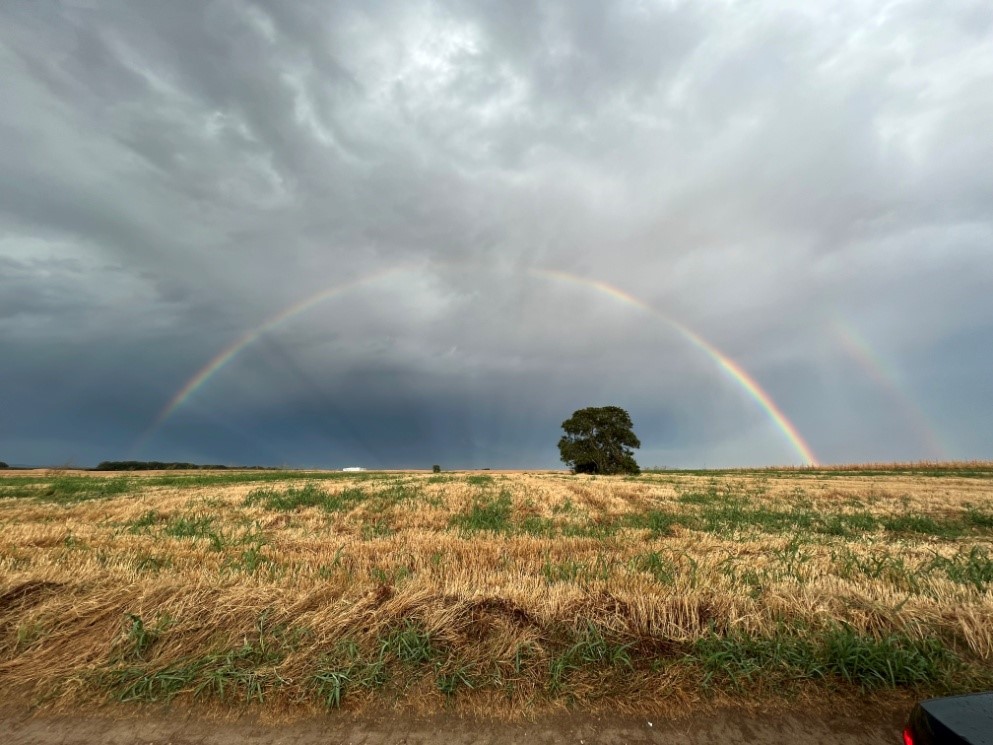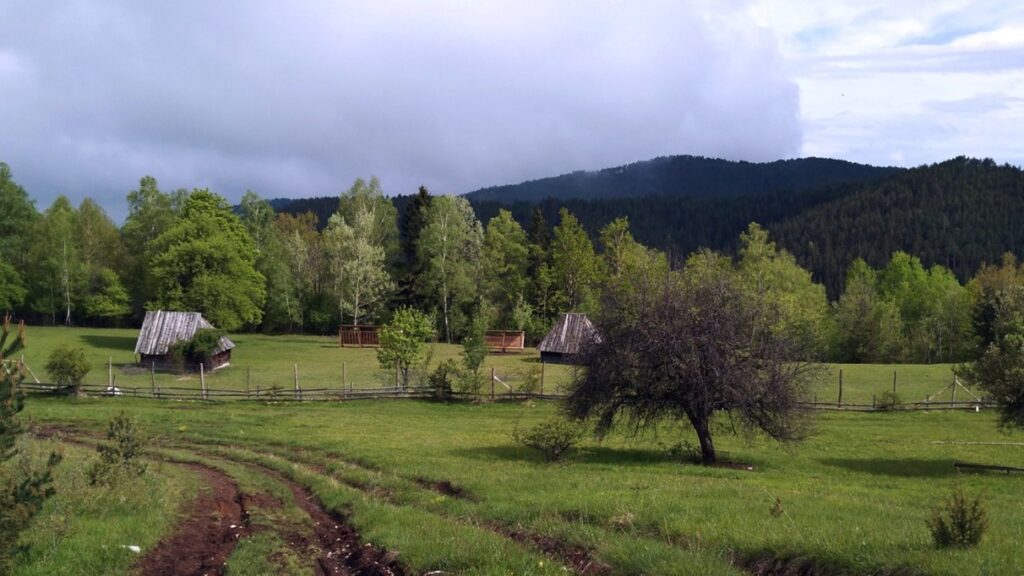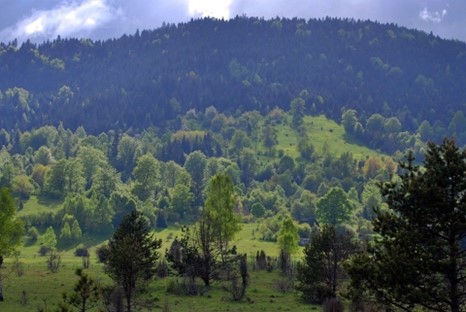By Milica Fotirić Akšić (University of Belgrade, Faculty of Agriculture, Institute for Fruit Science and Viticulture), Ljiljana Brašanac-Bosanac (Department of Environmental Protection and Improvement, Institute of Forestry), Tatjana Ćirković-Mitrović (Department of Forest Establishment, Silviculture and Ecology, Institute of Forestry)
Serbia, lying at the crossroads of central and south-eastern Europe, boasts extraordinary geographical diversity across its 88,499 km² lands. The northern province of Vojvodina features the flat expanses of the Pannonian Plain, while the central region is characterised by rolling hills and river valleys. The southern part of the country is dominated by mountain ranges, including the Dinaric Alps, Carpathian Mountains, and Balkan Mountains, with peaks exceeding 2,000 metres. Serbia’s mountainous areas are rich in natural resources and biodiversity, preserving rare and endangered species within national parks like Kopaonik, Tara, and Stara Planina. These regions, with their dense forests and unique ecosystems, not only highlight Serbia’s natural beauty, but underscore the country’s potential for sustainable tourism and organic farming.
Serbia’s landscape is distinguished by a combination of plains, hills, and mountain ranges. The Pannonian Plain covers the northern third of the country while the easternmost tip of Serbia extends into the Wallachian Plain. The terrain of the central part of the country is chiefly made of hills traversed by rivers, while mountains dominate the southern third of Serbia.
Thanks to their geographical remoteness, mountain areas in Serbia are not only a reservoir of natural resources, but also the guardians of customs, cultural heritage, and traditional production chains. Serbia’s mountain areas are home to unique nature, where varieties of rare, endangered animal and plant species can be found in their natural habitats. These natural and social resources make Serbia’s mountainous regions suitable for producing organic food and developing tourism and leisure activities that represent a significant part of the mountain population’s economy.
Although they possess multiple advantages, mountain areas in Serbia are characterised by an unfavourable demographic picture, as they are sparsely populated areas, and insufficient economic development (Živanović et al., 2022). Promoting the production of organic food and tourism that is respectful of nature in these areas not only allows visitors to explore their beauties, but also contributes to the sustainable livelihood of the communities and people who live there.
A Closer Look at Serbia’s Significant Mountainous Regions
Serbia is one of the rare countries that boasts multiple ranges of imposing mountains, with 15 peaks over 2,000 m above sea level. The Dinaric Alps stretch across the west and the southwest, following the flow of the rivers Drina and Ibar. The Carpathian and Balkan Mountains stretch in a north–south direction across eastern Serbia, while the ancient mountains in the southeast corner of the country belong to the Rilo-Rhodope Mountain System. Elevation ranges from the highest peak of the Balkan Mountains, Midžor, at 2,169 m to the lowest point of just 17 m near the Danube River at Prahovo. The northern province of Vojvodina lies in the Pannonian Plain, with several Pannonian Island mountains (Fruska Gora and Vrsacke Planine).

Kopaonik National Park
Kopaonik National Park, located in central Serbia, covers parts of the municipality territories of Raška, Brus, and Leposavić on the upper climbs of Kopaonik Mountain. Most of the national park is comprised of the densely forested parts of Kopaonik’s peaks. This area of outstanding natural beauty and diversity affords views and access to mountain peaks, pastures, dense coniferous and deciduous forests, and plateaus with springs, gorges, creeks, and barren highland plains.
Tara National Park
Tara National Park covers the biggest part of Tara Mountain, which is situated in western Serbia’s Zlatibor District. In 1981, Tara was declared a national park due to its diverse and preserved forest ecosystems and for its great biodiversity, as it is the natural habitat of the Pančić Spruce. The National Park covers 19,175 ha. It belongs to the municipality of Bajina Bašta and its average altitude varies from 1,000 to 1,200 m/asl. Notable locations include the Drina Valley Canyon, which has impressive limestone cliffs towering over 1,000 m, and the beautiful and wild Rača, Brusnica and Derventa river canyons.


Stara Planina
Stara Planina (“The Old Mountain”) Nature Park is located in eastern Serbia, bordering Bulgaria, in a territory of the town Zaječar and municipalities Knjaževac, Pirot, and Dimitrovgrad. It is part of the spacious mountain range called the Balkan, with its peak, Midžor, towering at 2,169 m.
Stara Planina is an area of exceptional geological diversity with developed and preserved flora and fauna. Some of most important species are dwarf iris, mountain sassa, adonis, Kosovo peony, bush alder, steppe oak, mountain maple, forest lily, peatland, saffron and others. The greatest diversity of birds in the region are located on Stara Planina . Mammal fauna is represented by several species, especially the vole, snow vole, lynx and bear.
Fruška Gora National Park
Fruška Gora National Park is part of the southern Pannonian Plain in the province of Vojvodina’s Srem District. Stretching over 80 km between the Danube and Sava rivers, it reaches 15 km across at its widest point. Fruška Gora is a low mountain range in an otherwise flat area, with its highest peak, Crveni Čot, at an altitude of 539 m/asl. Its lower slopes and foothills show pastures and fertile meadows, vineyards, and orchards, while the higher altitude climbs (above 300 m) are covered in dense, deciduous forests. Fruška Gora is the oldest national park in Serbia, designated in 1960, and its protected area stretches over an area of 25,525 ha.


Golija Nature Park
Golija Nature Park is located in southwest Serbia’s Raška District. It comprises the Golija Mountain Range, which rises from 415 m to an altitude of 1,833 m. The area is covered in oak, beech, fir, and spruce forests. In 2001, UNESCO declared this nature park the “Golija-Studenica Biosphere Reserve.” This protected area covers 75,183 ha. One of its main characteristics is its great number of springs, creeks, and rivers. Most of the park is forested, with Golija being the habitat of the Balkan maple and beech. There are over 1,100 other registered plant species in the park, many of them relict or endemic. With its numerous and various species of vegetation, some parts of the forests could be characterised as a jungle.

Vlasina
The “Vlasina Landscape of Extraordinary Characteristics” is a plateau located at 1,265 m/asl in southeast Serbia on the territory of the municipalities of Surdulica and Crna Trava. It covers most of the Vlasina Plateau. Vlasina is an example of Serbia’s characteristic wetlands, meadows, and peat bogs, which are relatively unique in the Balkan Peninsula. It is surrounded by the mountains of Gramada, Vardenik, and Cemernik. At the centre lies Vlasina Lake, the highest and largest artificial lake in Serbia covering an area of 16 km2.

Vlasina’s flora comprises plants characteristic to peat bogs, such as creeping cinquefoil, European white birch, carnivorous plant sundew, buckbean, etc. Despite the changes that have occurred throughout several centuries of anthropogenic influence, the region’s flora includes rare and endangered species. According to the Ramsar Information Sheet (2023), the site Vlasina hosts 219 plant taxa (without Bryophyta), including characteristic peat plants, such as Potentilla palustris, Betula pubescens, Drosera rotundifolia, Carex limosa, and Menyanthes trifoliate. Balkan endemic plant taxa, such as Silene asterias, Trifolium trichopterum, Pedicularis hoermeniana, Centaurea kotschyana, Pinguicula balcanica, and Aconitum pentheri can be found in this area.
The region’s fauna also includes important rare and threatened species. Herpetofauna, or amphibians and reptiles, is represented with 12 species of amphibians (Triturus karelinii, Bombina variegate) and 12 species of reptiles (Zootoca vivipara, Ablepharus kitaibelii, Vipera ammodytes). The region’s ornithofauna, which includes only birds, is represented by circa 180 species of birds recorded to date. Most of the bird species are strictly protected by national legislation. Additionally, Carpodacus erythrinus and Motacilla citreola, two of the rarest bird species in Serbia and in Balkan Peninsula, were recently discovered breeding around the shores of Lake Vlasina. The highlands of Vlasina are habitats to the internationally important species Spermophilus citellus and Lutra lutra. In total, 28 mammal species can be found there.
The Importance of Wild Fruit Tree Species in Serbia
According to the Strategy of Biological Diversity of the Republic of Serbia for the period from 2011 to 2018 (Official Gazette of the Republic of Serbia, No. 13/2011) and the Nature Protection Program of the Republic of Serbia for the period from 2021 to 2023 (Official Gazette of the Republic of Serbia, No. 53/2021), 88 forest fruit tree species have been identified in the natural forest communities of the Republic of Serbia, 12 of which have shown significant decreases in number and genetic diversity. These documents indicate the importance of native fruit species as genetic resources for food and agriculture, especially in fruit breeding, grafting, and as a collected resource. The economic aspect of these important species is reflected in the quality of timber and its use in the wood industry, and the use of their fruit in the food and pharmaceutical industries.

In the general and specific goals of the Strategy of Agriculture and Rural Development of the Republic of Serbia for the period from 2014 to 2024 state the following on the importance of these fruit trees:
“The Republic of Serbia has favourable soil and climatic conditions for the production of various types of fruit. […] The importance of this production is reflected in the fact that it enables better use of surfaces in numerous locations and areas with less favourable soil and climatic conditions, including soils with poorer physical, chemical and other properties, as well as surfaces with a greater slope. “
The inhabitants of rural areas in the Republic of Serbia depend on primary agricultural production to the highest extent. The rural economy possesses significant potential for mitigating poverty amongst the rural population by redirecting to alternative forms of agricultural production, the sustainable management of natural heritage, support in establishing micro-enterprises, and promoting eco-tourism. One potential for developing alternative agricultural activities in rural areas is the use of ecological resources to produce specialised products, especially on abandoned agricultural lands. Exploring new markets outside the conventional food chain, where forest fruit trees could play a significant role, also presents an opportunity. To determine the potential of these species and their function as sustainable economic diversifiers in rural areas, multidisciplinary approaches and studies are required.


The Potential Uses of the Wild Fruit Tree Species on Stara Planina Mountain
Stara Planina Mountain dominates the landscape of the Pirot District in eastern Serbia and is rich in native wild fruit species. Generally, the Pirot District’s advantages for sustainable economic and social development using forest fruit trees are numerous. This is brought about by a favourable geographical position, a large potential workforce, a favourable climate, and great natural wealth (springs of drinking water, forests, pastures, meadows, etc.). Large areas of fertile and healthy soil, a sufficient number of trees, and enough precipitation during the vegetation period in submontane and mountainous areas, as well as favourable possibilities for the irrigation of significant areas in the Pirot Basin, have a positive effect on the development of this rural area.

As a result, the Pirot District shows significant potential to reduce rural poverty through the sustainable use of its forest fruit trees, both for traditional agriculture and new market opportunities. These opportunities include starting businesses related to the collection, sale, and processing of native fruit species, as well as engaging with collectors, buyers, processors, and exporters. The collection and processing of forest fruit can, for example, offer significant developments for small family farms. In this way, the use of these plant species encourages the development of the local economy, preserves its ecosystem and biodiversity, and represents an important component in the life of the area’s poorer population. Because of a pronounced decrease in the number of inhabitants in rural parts of Serbia, stimulating the sustainable use of forest fruit trees for commercial purposes would also provide an increase in the number of inhabitants in these areas, having great effects on the development of this marginalised area. Better conditions can be created for the development of tourism, trade, and other activities, as well as significant export potential.

Every year, the Ministry of Republic of Serbia responsible for environmental protection announces a tender for the issuance of a licence for the collection of wild flora, which also includes forest fruit trees. From the territory of protected natural areas, collection is permitted only if it is foreseen by a special act on the protection regimes of that area and with the consent of the manager of the protected area.
However, greater support from the state is necessary. This could take form in subsidies for the establishment and development of micro-enterprises engaged in the purchasing, cultivating, processing, or exporting forest fruits and their products. Improving processing capacities would also increase export potential, the sustainable collection and marketing of forest fruits, and the continuous monitoring of the most burdened species to preserve them for future generations.


